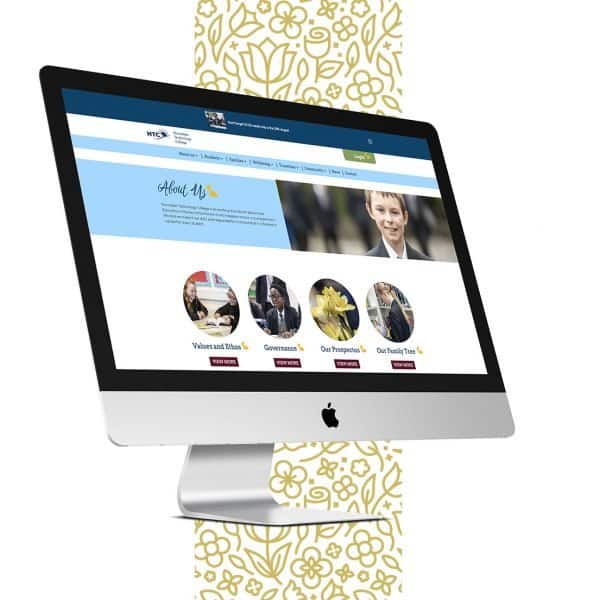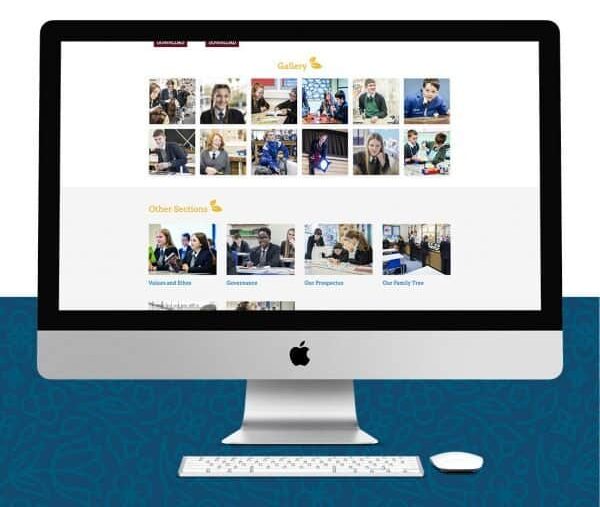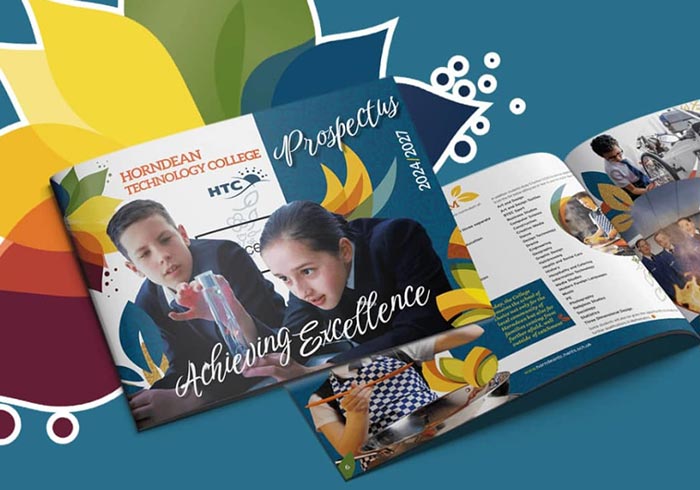
How to use office graphics to inspire students and staff
21 May 2025
Vehicle graphics vs. Car wraps: What’s right for your brand?
21 May 2025
When researching a school, college, or university, the first stop is almost always the website. That moment when a parent searches for admissions details, a student looks for course information, or a teacher checks for resources can shape their entire perception of your institution. A well-executed education website design is about connection, clarity, and conversion.
At Design Image, we’ve spent nearly 20 years helping education providers across the South Coast and beyond build websites that serve real needs. Whether working with a small primary school or a multi-campus college, our focus is always the same: creating user-friendly, goal-driven designs that make information easy to find and interactions seamless.
Built entirely in-house from our Fareham studio, every website we design reflects the values of the institution it represents while meeting the expectations of the people who use it. Drawing on our deep experience in education website design, we know the common pitfalls to avoid and the best practices that drive engagement.
If you're considering a new site or refining an existing one, these five tips will help you build a digital experience that truly supports your students, staff, and wider community.

1. Make it easy for people to find what they need
A good education website design should help people find what they need without effort. This starts with a simple, clear layout that works well on every device. Many students and parents visit your site on phones or tablets, so your content must be easy to read and navigate on smaller screens. At Design Image, we build responsive websites for schools, colleges, and universities across Hampshire and beyond. We make sure everything works properly, no matter how people view it.
Menu should be short and logical. Avoid too many dropdowns or pages hidden deep in the site. Group-related topics together - for example, placing all admissions information in one clear section. Use descriptive labels and headings so visitors know exactly where to click. A search bar is essential, especially for larger education sites. James D’Annibale from Wilson College notes, “Many times we find that students don’t even go to that nice menu that we had made with the page categories. They just click on ‘search’. They type whatever they need in the search bar.” To support this behaviour, we often include links to popular pages on the homepage so people can find what they need right away. A multisite setup is a smart option if you run a group of schools or colleges. It helps you manage all your websites in one place. Each school or campus can keep its identity, but you control the content and structure. This also helps you stay consistent and avoid confusion.
A clear and easy-to-use website makes a strong first impression. It shows that your school or college is organised and prioritises people.
Boost Your Brand with Design
2. Put your users first
A good education website design puts people first. Your site should help visitors find what they need quickly and without stress. Most education websites serve multiple audiences: prospective students, parents, current students, and staff. Each group comes with different questions and priorities.
A prospective student may want to compare courses or explore campus life. A parent might be checking term dates or looking up Ofsted reports. A current student needs fast access to timetables, logins or support. Staff might be looking for updates, forms or internal tools. Your website should make each of these journeys simple.
According to Forbes, first impressions happen fast as users form an opinion about a website in just 0.05 seconds. If your homepage is cluttered or confusing, visitors may leave before you’ve even had a chance to engage them. Clear menus, well-labelled buttons, and logical content grouping help users feel at ease and in control.
Ultimately, a well-organised, fast, and user-friendly website builds confidence. That trust helps your visitors take the next step - applying, enrolling, or getting involved.
3. Be clear, consistent and on-brand
Your website should reflect the true character of your school or college. People will judge your values and standards by what they see online. A clear design, good structure and use of brand colours help make a strong first impression. If your website feels confusing or messy, people may think the same about your institution.
At Design Image, simple design is the most effective. We use clean layouts and make sure every page is easy to read and navigate. We keep your brand consistent, using the same tone, colours, and logo across the site. This helps visitors feel confident in what they are seeing.
We work closely with schools, colleges and universities to understand what makes them different. Your website should reflect your story. The site should feel creative if your school is known for its creativity. The site should feel the same if your college is about structure and professionalism.
We also help with wider education branding and design. This means your printed materials, signage, and online platforms all work together, giving students, parents, and staff a complete and joined-up experience.

4. Keep your content fresh and useful
Your education website design should never stand still. A static site can feel outdated and may leave the wrong impression. Regular updates show that your school or college is active and that you care about your visitors' experience.
Adding fresh content is one of the simplest ways to keep your site current. Share recent news, exam results, student work and upcoming events. Post regular blog articles that answer common questions from parents and students. This builds trust and shows that your team is involved and responsive.
If you run open days, ensure the dates and booking links are easy to find. If you're proud of a new facility or partnership, talk about it. These updates also help your website appear in search results, which supports your education website SEO over time.
You do not need to change everything at once. Small, regular updates are enough to show your audience that your website is active and that your school or college is moving forward.
If your website is difficult to update or you’re unsure what to post, we can help. Contact our team to speak with them.
5. Make sure your website is fast and accessible
A slow website can stop people from using your site. Nearly half of users (47%) won’t wait more than two seconds for a page to load, and 40% will abandon a site entirely if it takes more than three seconds. That means even the most helpful content or beautiful design can be wasted if your site is slow. Prioritise fast load times, especially on mobile, where users expect smooth performance.
Accessibility matters too. Your website should work for everyone, including people with disabilities. This shows respect and meets legal standards. It helps parents, students, and staff get the necessary information without trouble.
We follow clear rules, like the WCAG guidelines, to guide our design. This means good colour contrast, easy-to-read text, and alt text that describes every image. It also means you can use the website with a keyboard or screen reader. These things help all users and support your rankings on Google.
Fast, simple and accessible websites show that your school cares. They work better and get better results.
Why education website design matters
Your education website should help people take action. It should be clear, welcoming and easy to use. It should work just as hard as your team does. Whether someone wants to apply, book a visit or read about courses, your site should simplify that.
At Design Image, we’ve spent years working with schools, colleges, and universities. We know what works because we’ve done it many times. Our team in Fareham designs websites that feel right for your audience. We keep things honest, creative, and practical.
We handle everything in-house, including website design, development, training, and support. We also help with WordPress, content updates, ongoing maintenance, and printed materials like prospectuses and signage.
You might want to know
Contact Design Image™
We're part of SOS Creativity™ and we're a friendly bunch, looking forward to speaking with you.
9 am – 5 pm
Office address
6A The Gardens, Broadcut, Fareham PO16 8SS




